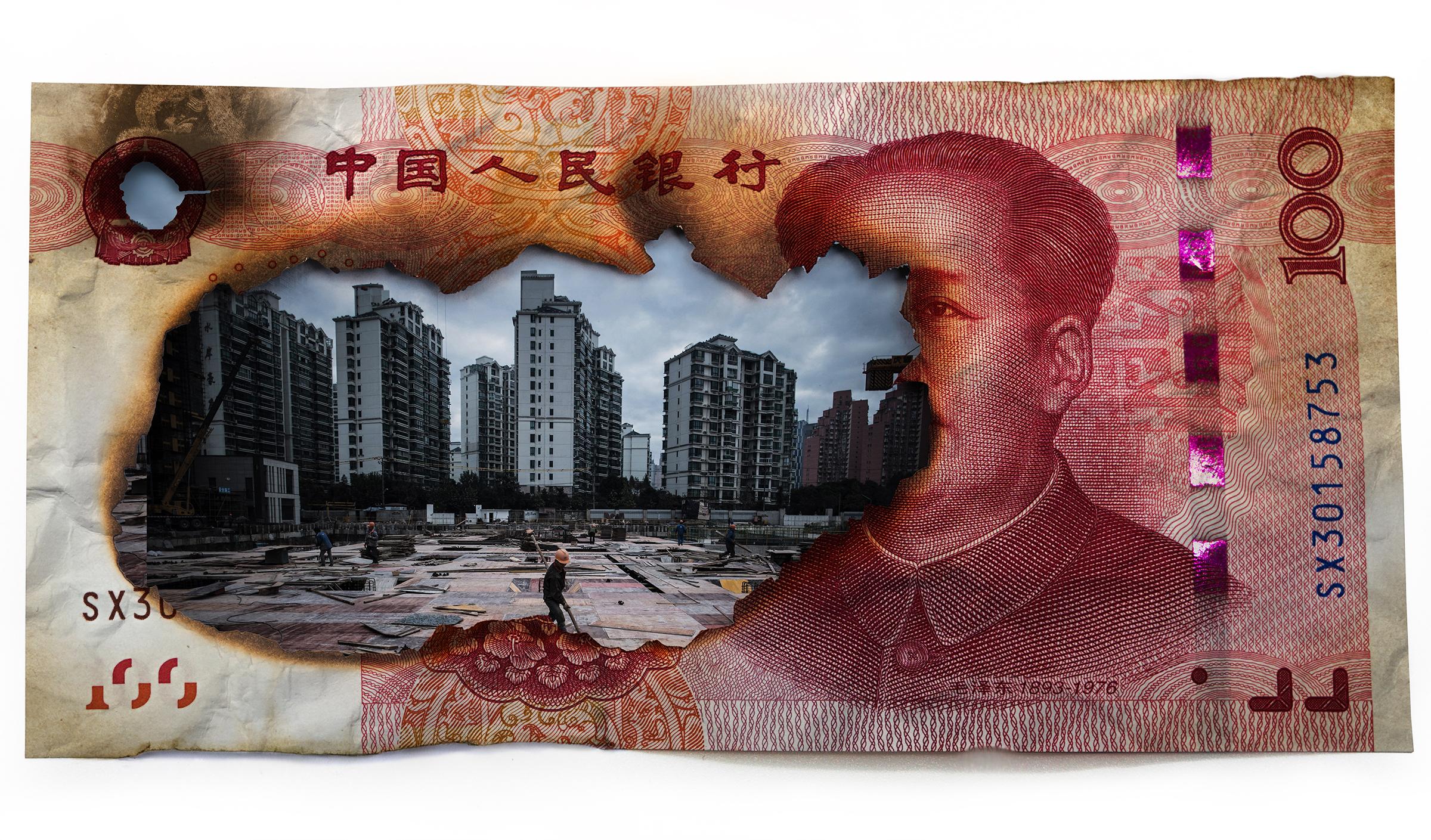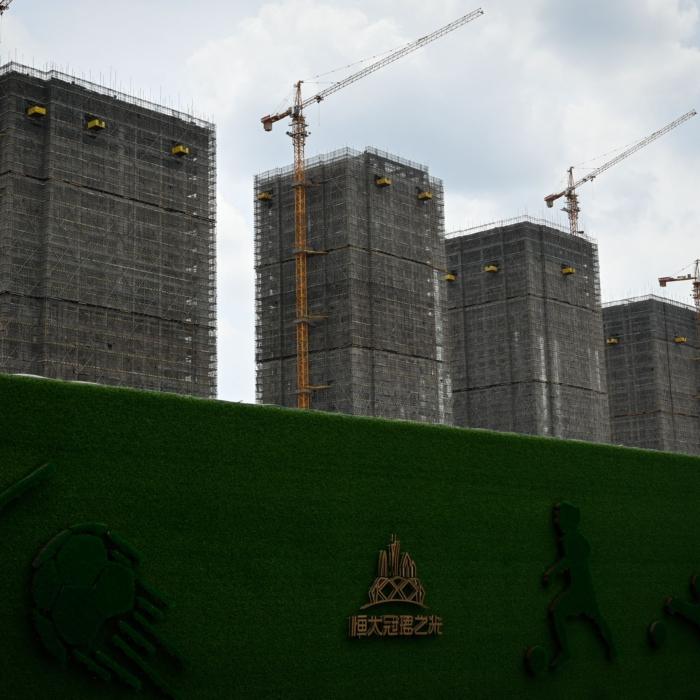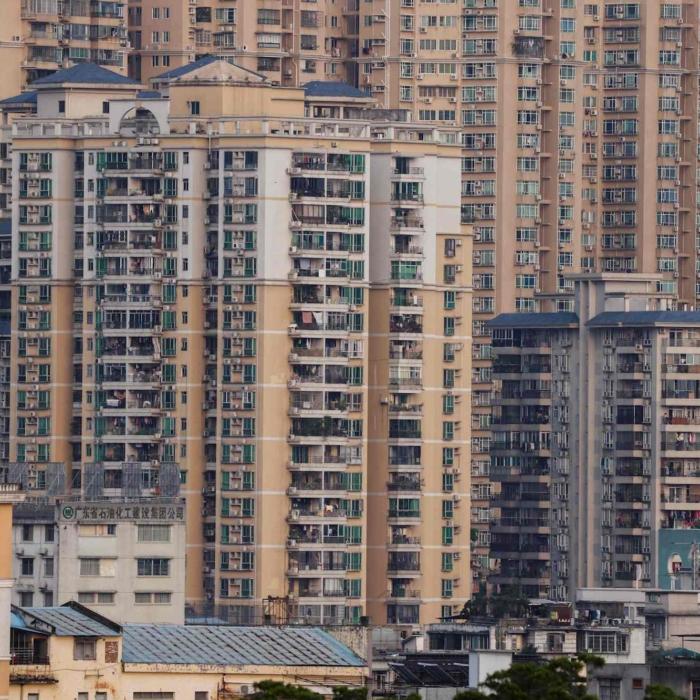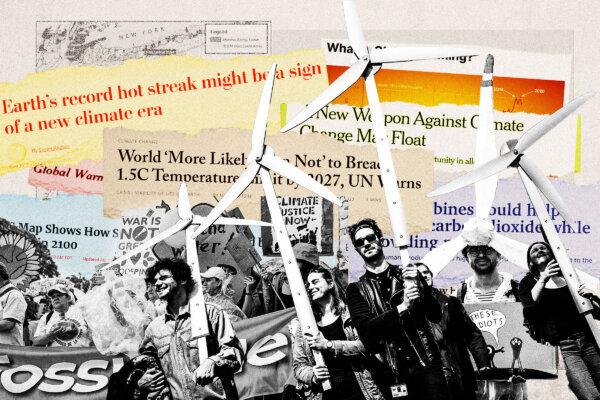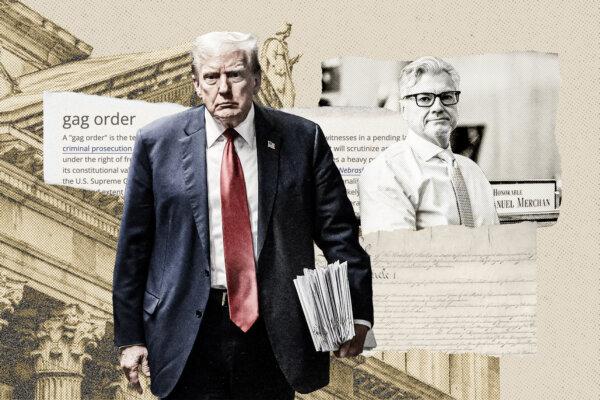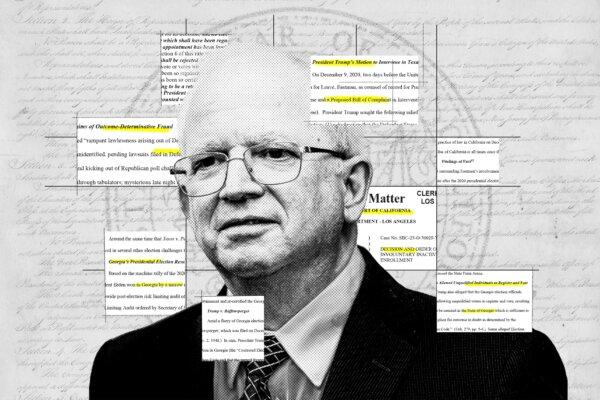The world’s second-largest economy is in a world of trouble.
Significant perils are facing China’s economy—the engine of China’s past economic growth has stalled, while today’s unique economic circumstances limit Beijing policymakers’ options.
According to official numbers, China has seen mid-to-high single-digit gross domestic product (GDP) growth consistently over the past 20 years. While most experts today believe that those figures have been inflated, its historical growth was still sizable and was predicated on two main drivers.
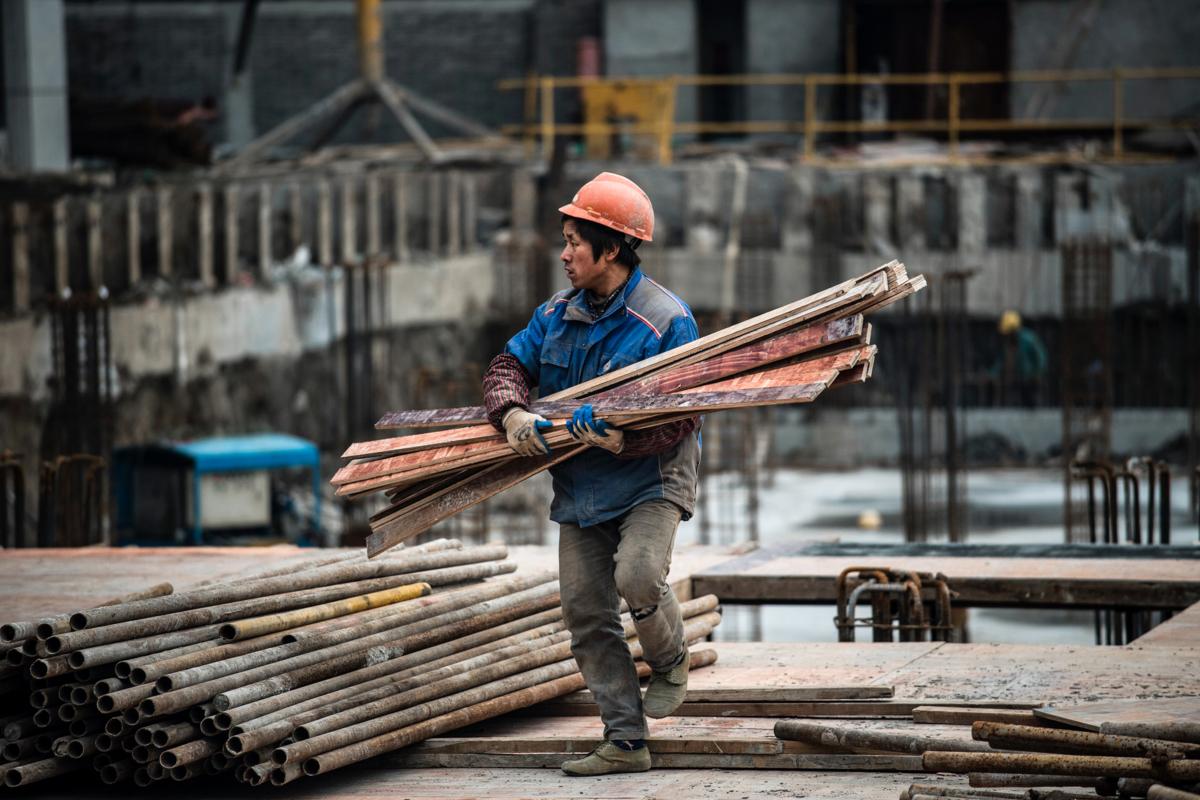
A third factor, domestic consumption and services, is one that the Chinese Communist Party (CCP) has been pushing for. It’s a smaller part of the nation’s economic growth, relative to other countries. The regime understood that building, constructing, and even manufacturing would eventually all dry up and that its domestic engine would need to be strong enough to carry the economy.
Real Estate Woes
Real estate, by some measures, makes up more than a quarter of China’s economy. Aside from its importance as an economic engine, it also makes up a significant portion of Chinese people’s wealth (the other being the stock market, which has also been tanking). This is especially true for the middle class, which makes up a significant portion of its urban population.A lot of ink has been used in documenting China’s real estate market slowdown. There’s too much supply, causing many apartments to sit empty. Developers such as Evergrande have collapsed, and previously financially sound developers such as Country Garden are now missing bond payments as well. These developers are all generally funded by U.S. dollar-denominated debt.
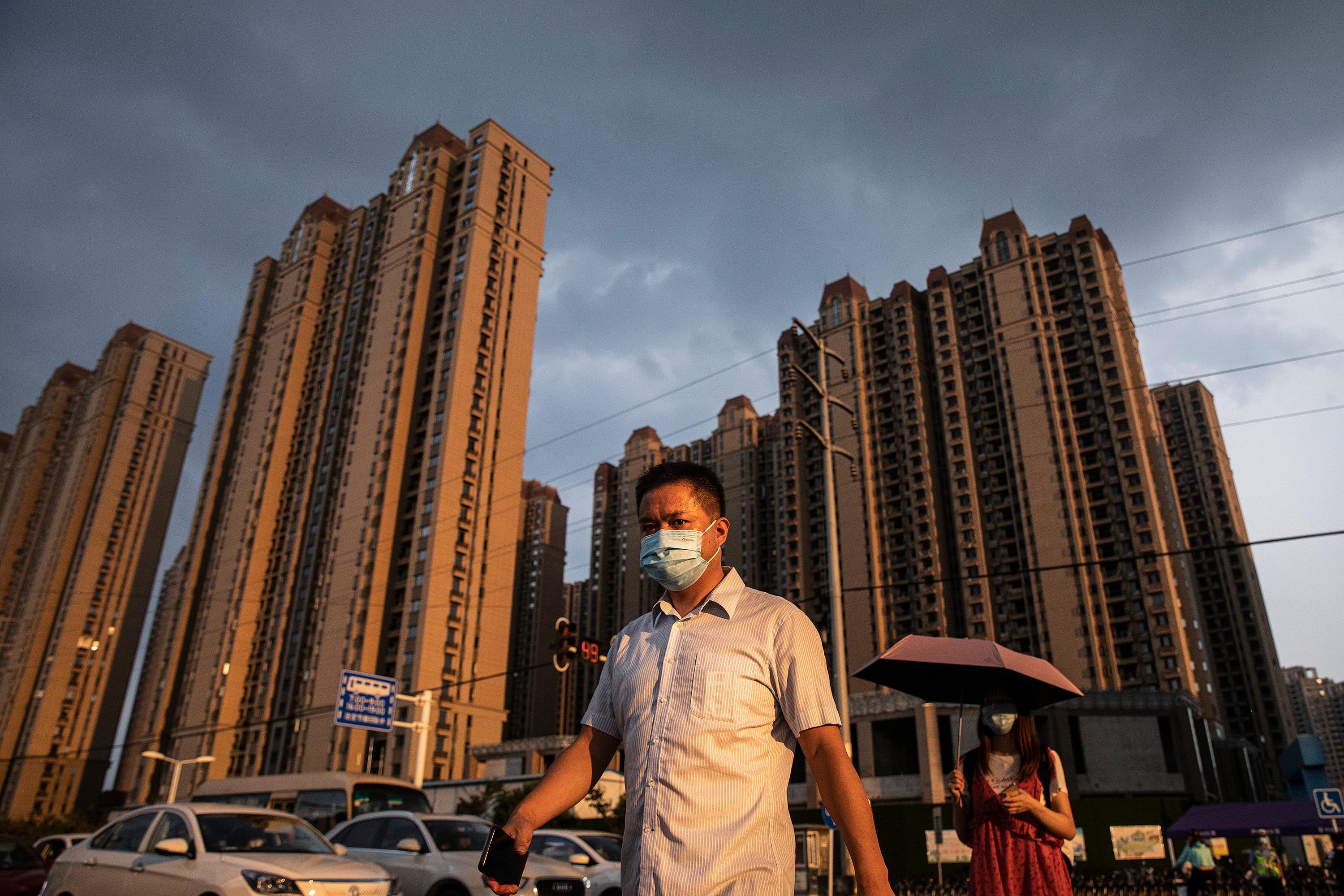
Economic growth predicated on real estate requires property values to go up, and developers gorging on high-interest debt need more sales to free up working capital to keep the cycle running.
Beijing has been worried about excesses in the real estate market—both the pace of price increases and higher debt burden—and regulators have engaged in periods of forced contraction and stimulus to manage the market.
But the bottom has fallen out of the real estate market, caused by lower transaction levels on the basis of declining liquidity and declining household wealth. Today, Beijing has less of an appetite to stimulate the property market, given the many fires it must fight on other fronts.
Official Chinese government data are more sanguine, but data from real estate agents and other private data providers paint a dire picture.
A Bloomberg report citing these private data shows that existing home prices have fallen by more than 15 percent in some of the best neighborhoods in tier-one cities such as Shanghai and Shenzhen. A similar trend is playing out in tier-two and tier-three cities.
The result is that developers are losing money, defaulting on their debt, and hurting both foreign investors and domestic Chinese investors who are holding their bonds and stocks. Even state-owned developers are warning that widespread losses are forthcoming.
Infrastructure and Local Government Debt
A related means to juice economic growth in the past few decades has been infrastructure development.This is an easy way for Beijing to directly spur the economy. Years of central bank stimulus encouraged waves of infrastructure development—roads, airports, bridges, and power infrastructure—in cities across China. This checked multiple boxes at once: It provided jobs, grew the economy both locally and nationally, and kept the stream of kickbacks flowing to local CCP officials.
Local governments took out huge loans to pay for these expensive and at times wasteful infrastructure projects. Many of these projects were never meant to be profitable, as there was never enough demand for the services.
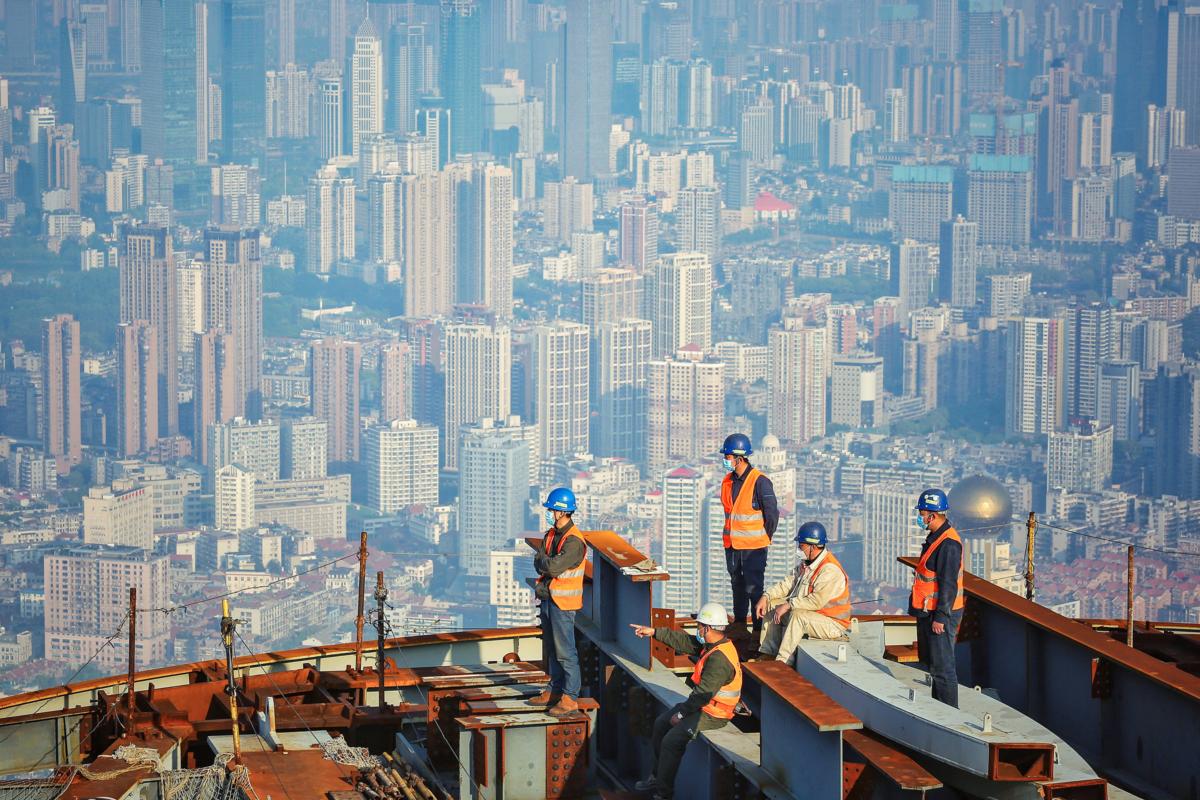
The magnitude of such debt is hard to quantify, as governments utilize off-balance sheet vehicles called “local-government financing vehicles” (LGFVs), which issue bonds to Chinese investors, banks, insurance companies, and asset managers. LGFVs took off after the global financial crisis and were meant to circumvent laws banning local governments from borrowing directly from banks or the capital markets.
The International Monetary Fund estimates that 66 trillion yuan ($9.1 trillion) of LGFV bonds are outstanding. That’s roughly half of China’s annual GDP.
The CCP is no longer emphasizing infrastructure to grow the economy, as more infrastructure projects than necessary have already been built. Beijing is focused on managing the excess debt created by this bubble, which is on the verge of bursting.
As mentioned, these projects are mostly unprofitable. LGFV bonds, which are largely held in private hands, are on the verge of missing payments and coming due.
So far, local governments have been prioritizing timely interest payments given the catastrophic results of widespread default. These bonds have widely been understood to be “government-backed,” so investors have an implicit understanding that the CCP would come up with a solution should they widely default.
Beijing, on the other hand, tries to reject such expectations. At the same time, central authorities are unlikely to have a complete understanding of the risks of these off-balance sheet vehicles at local and provincial levels. In the CCP hierarchy, divulging too much to one’s Beijing bosses could also be politically dangerous.
In August, Beijing quietly announced that it would allow 1 trillion yuan ($137.1 billion) in public bond sales by local governments to refinance or repay LGFV and other off-balance sheet debt. China’s state-owned commercial banks have also issued super-long-term loans to the most creditworthy localities to refinance these debts.
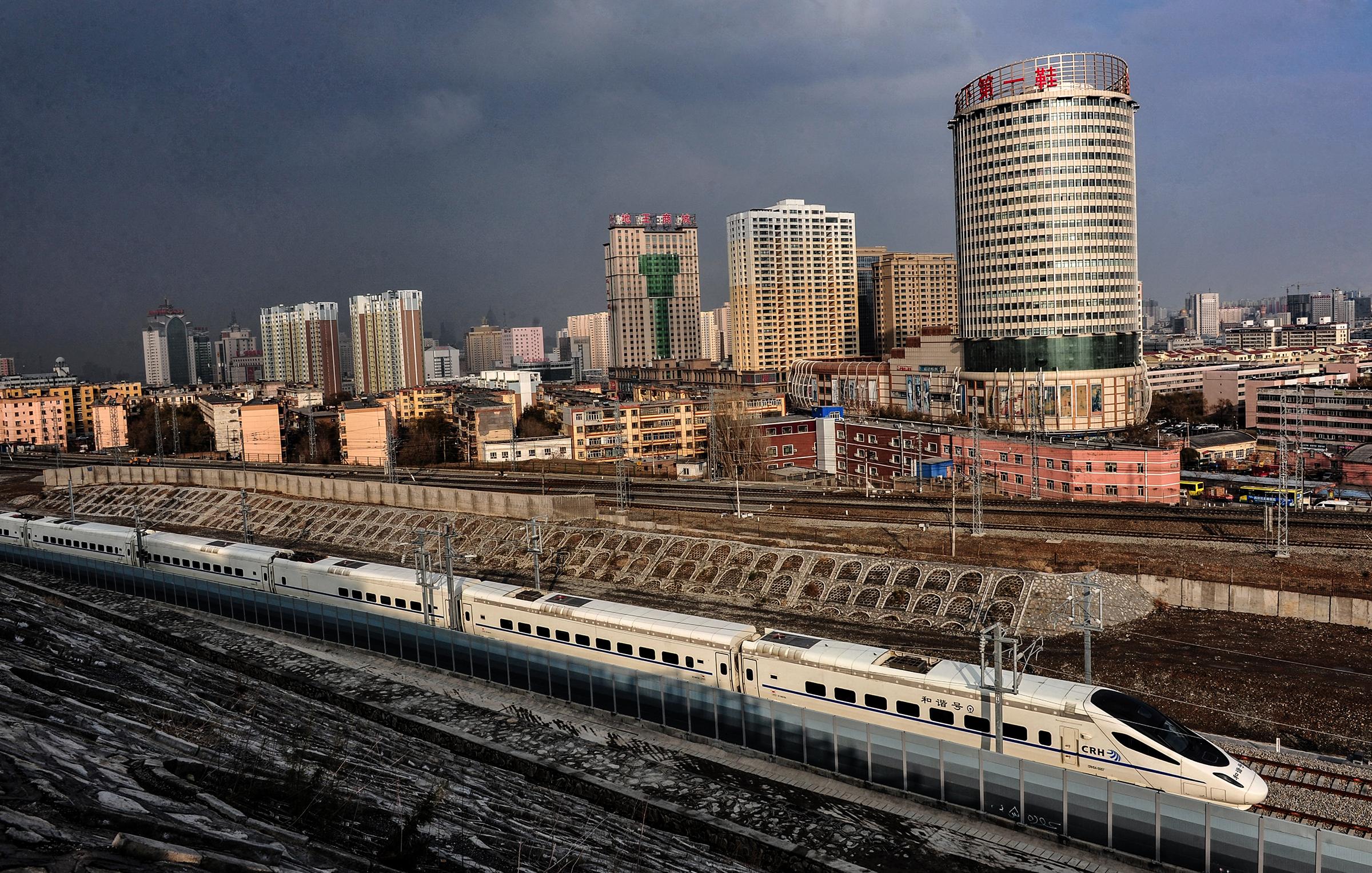
A Ponzi Scheme Works—Until It Doesn’t
The CCP has dabbled in cleaning up debts associated with rampant real estate and infrastructure building. For instance, there have been periods of belt-tightening to the brink of collapse, which is followed up with periods of stimulus measures to create more debt.Using new debts to repay old debts is a time-honored tradition. It’s a “Ponzi scheme,” except new investors know what they’re signing up for. It’s also utilized by the U.S. government and works as long as new investors believe in and trust the institution running the scheme.
Think back to 1999, when then-premier Zhu Rongji created the four “bad bank” asset management companies to buy nonperforming loans from Chinese bank balance sheets resulting from the 1997 Asian financial crisis.
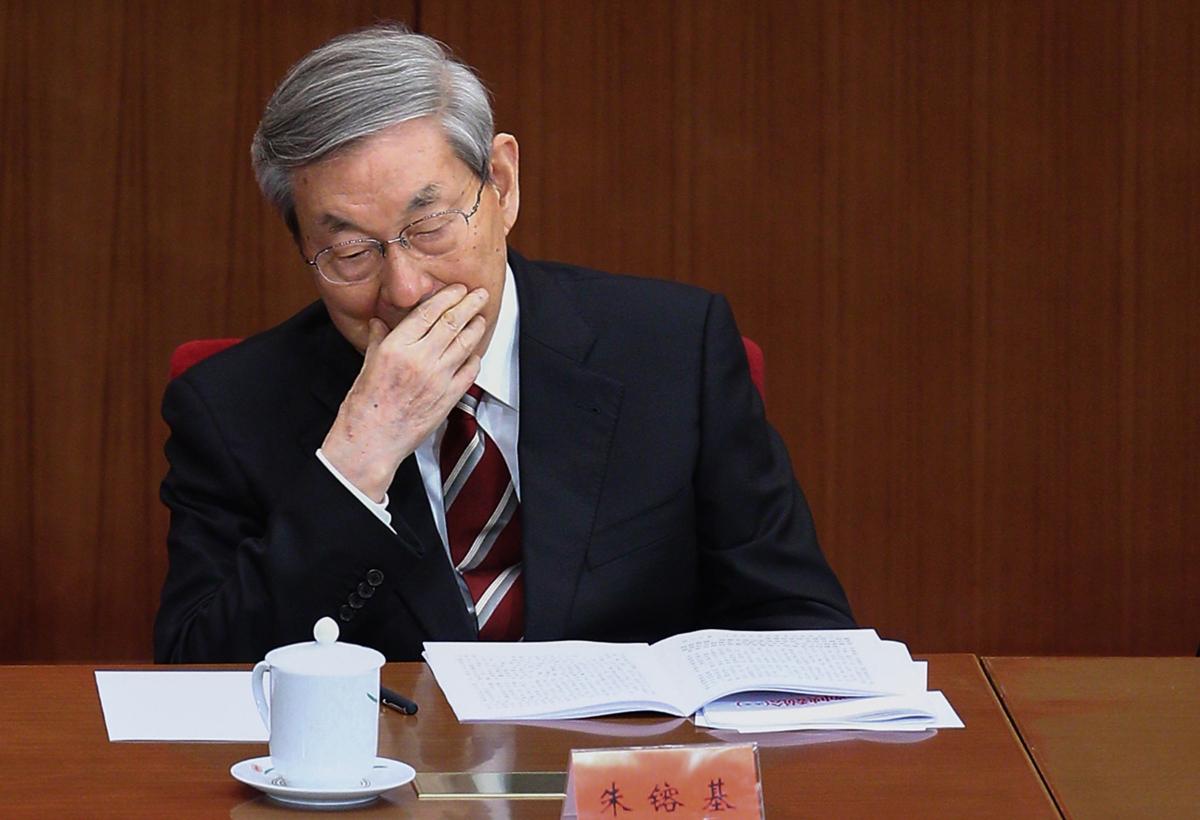
It worked then during the early days of China’s “Ponzi scheme,” and foreign investors were just beginning to invest in China. In fact, they were flocking to China then.
Today, the liquidity picture is much different—and much worse.
There’s a perfect storm of issues presently causing both foreign investors and Chinese nationals to exit China. These items individually have been well-covered in this publication.
Domestically, capital controls are playing a part in stopping money from leaving China. But that still hasn’t stopped almost 11,000 Chinese millionaires from leaving the country in 2022. That’s the largest number of high-net-worth individuals leaving a single country in the past decade. Bitcoin and cryptocurrency, despite having been banned in China, continue to play a part in circumventing these capital controls.
As for foreign investments, then-President Donald Trump can be credited with the idea of decoupling from China and reinvesting in America. President Trump highlighted the many ills of a U.S. economy so intertwined with China’s. But without a cataclysmic event, few businesses were heeding that warning.
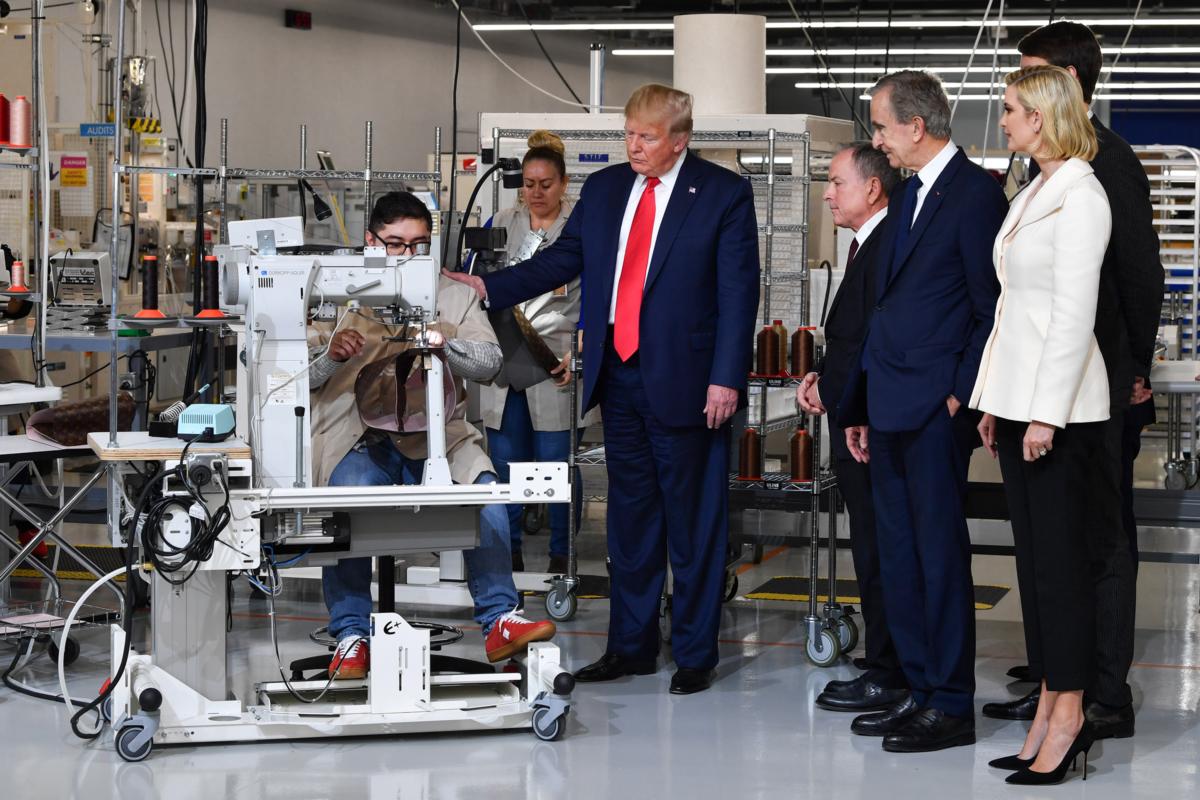
The event came in the form of the COVID-19 pandemic. Western businesses saw the logistical and supply chain problems created by Beijing’s draconian COVID-related lockdowns. China was the world’s factory, but it was also the world economy’s single point of failure.
Businesses began to increasingly migrate manufacturing capacity away from China to countries such as Mexico, India, Taiwan, Vietnam, and Thailand. For years, China’s cheap labor, including free labor from reeducation camps that employed victims such as Falun Gong practitioners, produced inexpensive exports to which Western consumers and businesses turned a blind eye.
Today, growing backlash against China’s abysmal human rights record, including controversy within the manufacturing value chain such as Xinjiang-produced cotton, has made Western companies more hesitant to invest.
Supply chain issues didn’t cause the high inflation and economic downturn in the West beginning in 2022, but they added fuel to the fire. Western nations—after two decades of near-zero interest rates coinciding with China’s economic rise—began to tighten monetary policy and battle impending economic recession.
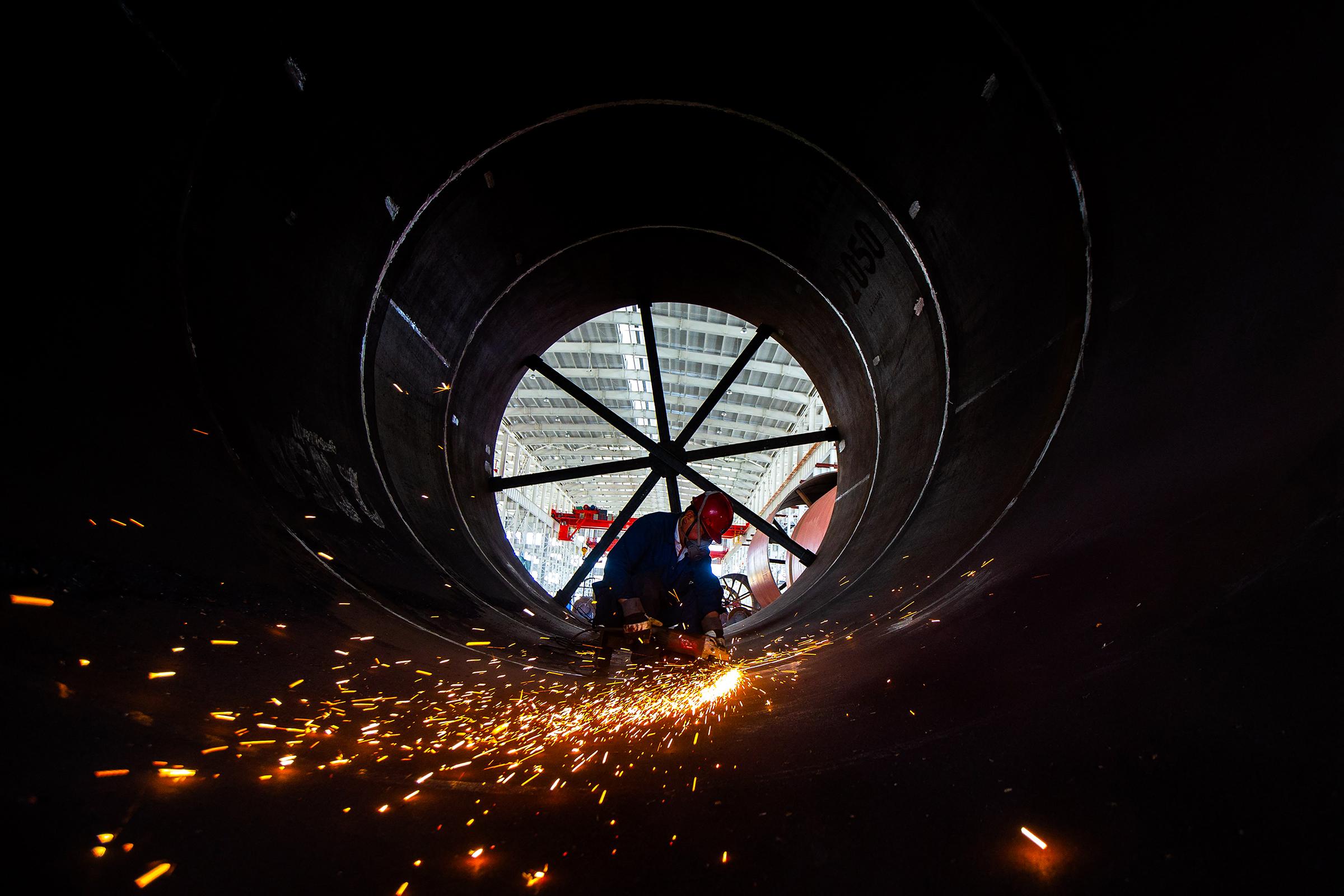
Inflation and Return to Rate ‘Normalcy’
This leads us to today. Events during 2022 and 2023 outside China have served to push China’s economy into further turmoil.Economic downturns in the United States and Europe have sapped demand for Chinese goods, slowing down Chinese exports and manufacturing activity. This has an impact on Western economies as well, as lower Chinese real estate and infrastructure construction activity has also decreased China’s demand for natural resources.
This hurts the economies of Australia, the Middle East, and South America—huge commodity-exporting nations—thereby further decreasing their ability to buy Chinese manufactured goods. This creates a negative feedback loop that ultimately damages China’s export-driven economy even more.
In the past 18 months, the U.S. Federal Reserve and central banks of most other developed nations have worked in concert to increase interest rates at the fastest pace in a century.
The fed funds rate today sits at 5.25 to 5.50 percent—almost the exact rate as seen in the second half of 1999, and much closer to historical norms.
While benchmark interest rates aren’t an apples-to-apples comparison, China’s medium-term lending rate is about 2.5 percent. Assuming yields on new bonds and securities price off those benchmarks, we see that average U.S. debt investments could pay 300 basis points more than their Chinese counterparts, ignoring credit and liquidity considerations. In other words, U.S. debt securities are more attractive than Chinese ones today.
This means that global investment dollars today are flowing into the United States and away from China. The lack of capital further limits Beijing’s available options to save its economy. The impact of this is evident in the currency markets, where the yuan is trading at its lowest levels since 2007 even in onshore markets where the CCP sets the rates.
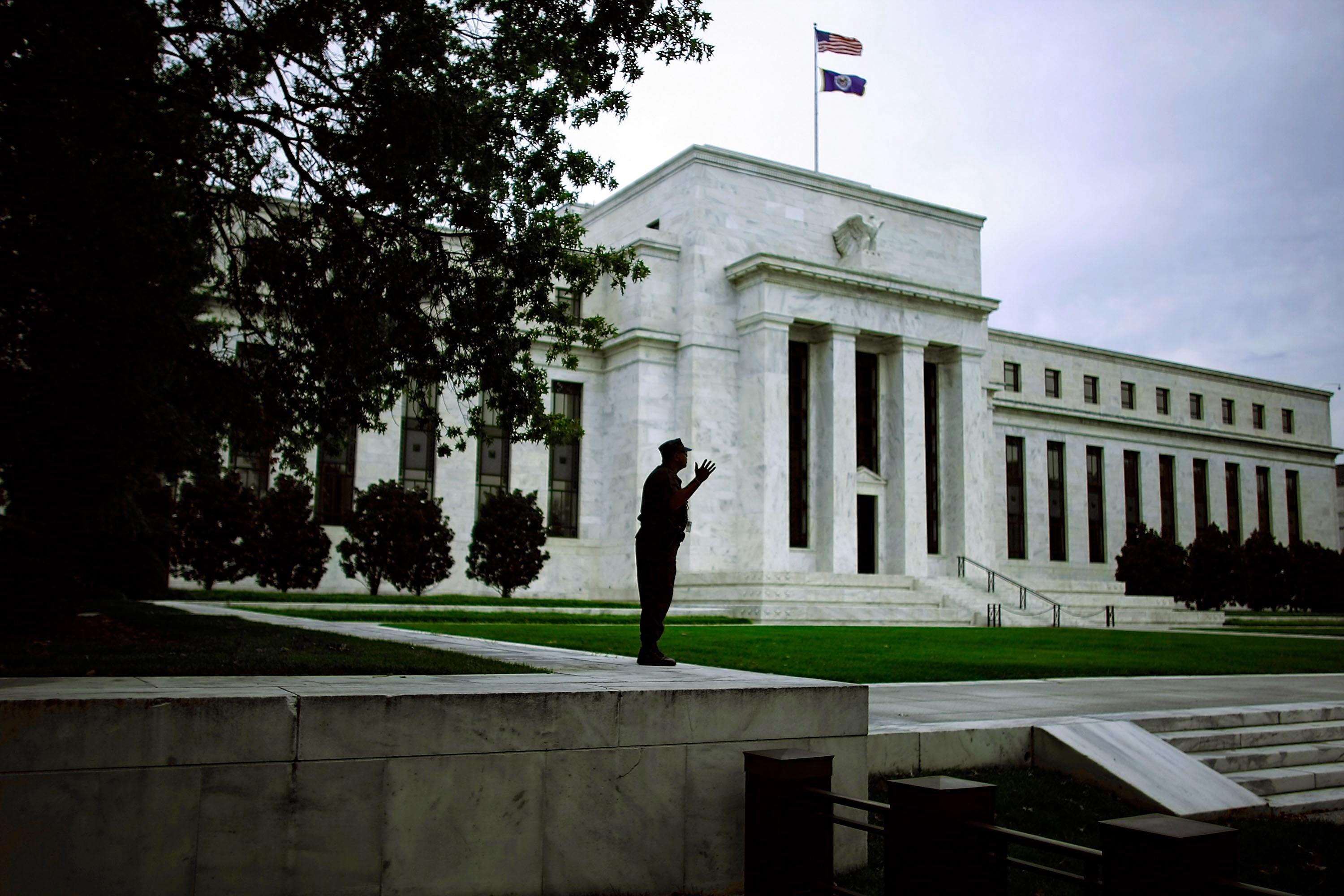
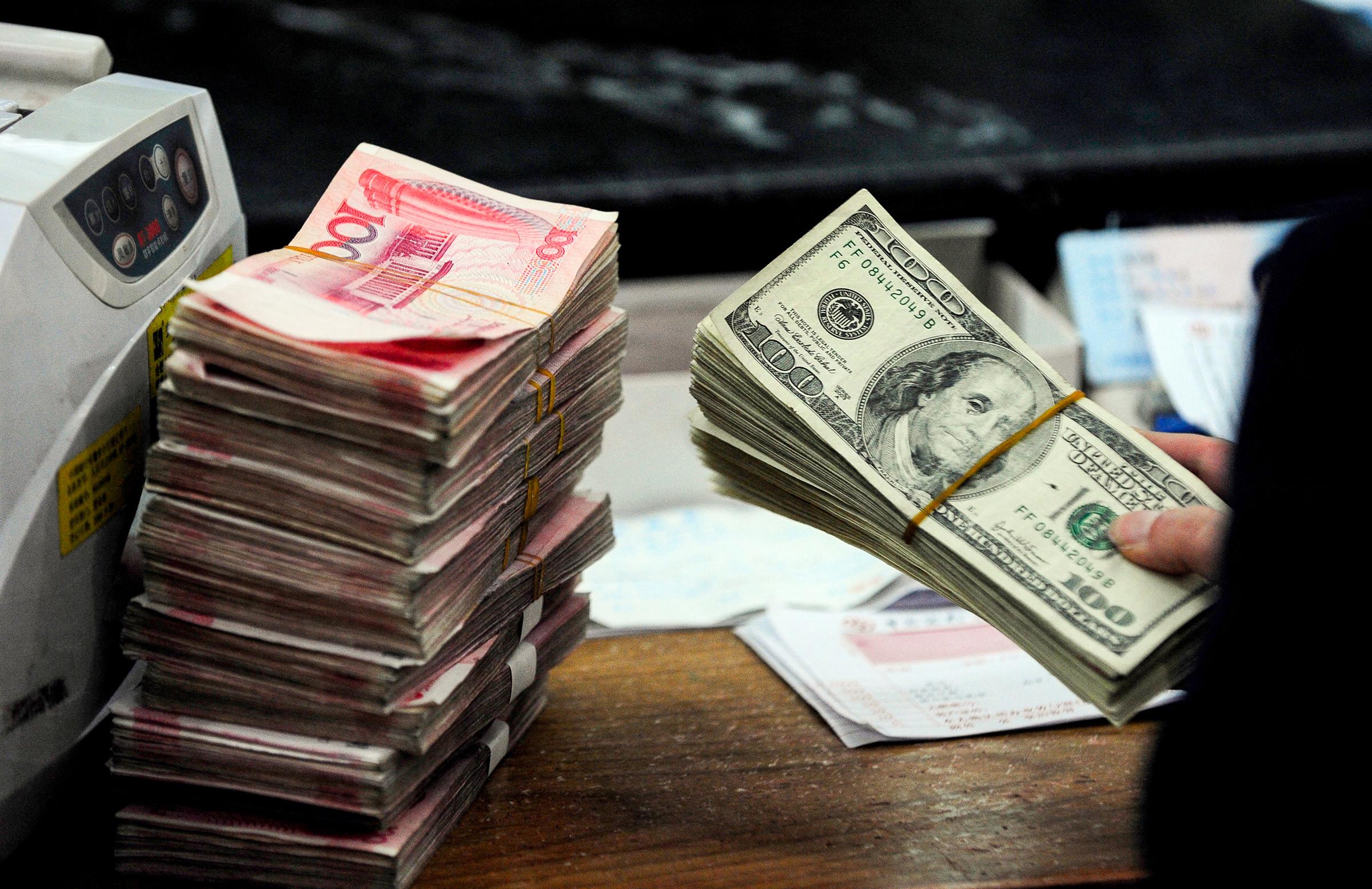
Domestic and BRI Dreams Crushed
So far, we’ve established that the traditional drivers of China’s economic growth engine are disappearing.The CCP knew this day could come. Beijing has tried to build up its domestic economy for years, investing in (and in many cases, stealing) new technologies and business know-how. Officials throughout the country have been repeating CCP leader Xi Jinping’s “self-reliance and self-strengthening” mantra.
That was the goal of the “China 2025” project and its Belt and Road Initiative (BRI) to build a cohort of regional economic support systems.
The reality is that none of these support systems have materialized.
China is facing major demographic issues internally. Its rapidly aging population and lack of widespread pensions are both an economic and political risk. About 300 million migrant workers aren’t eligible for most of those benefits. Today, it faces the highest youth unemployment in recent history, and the wealth built up by its middle-aged middle class is being eroded daily by crumbling real estate and stock markets.
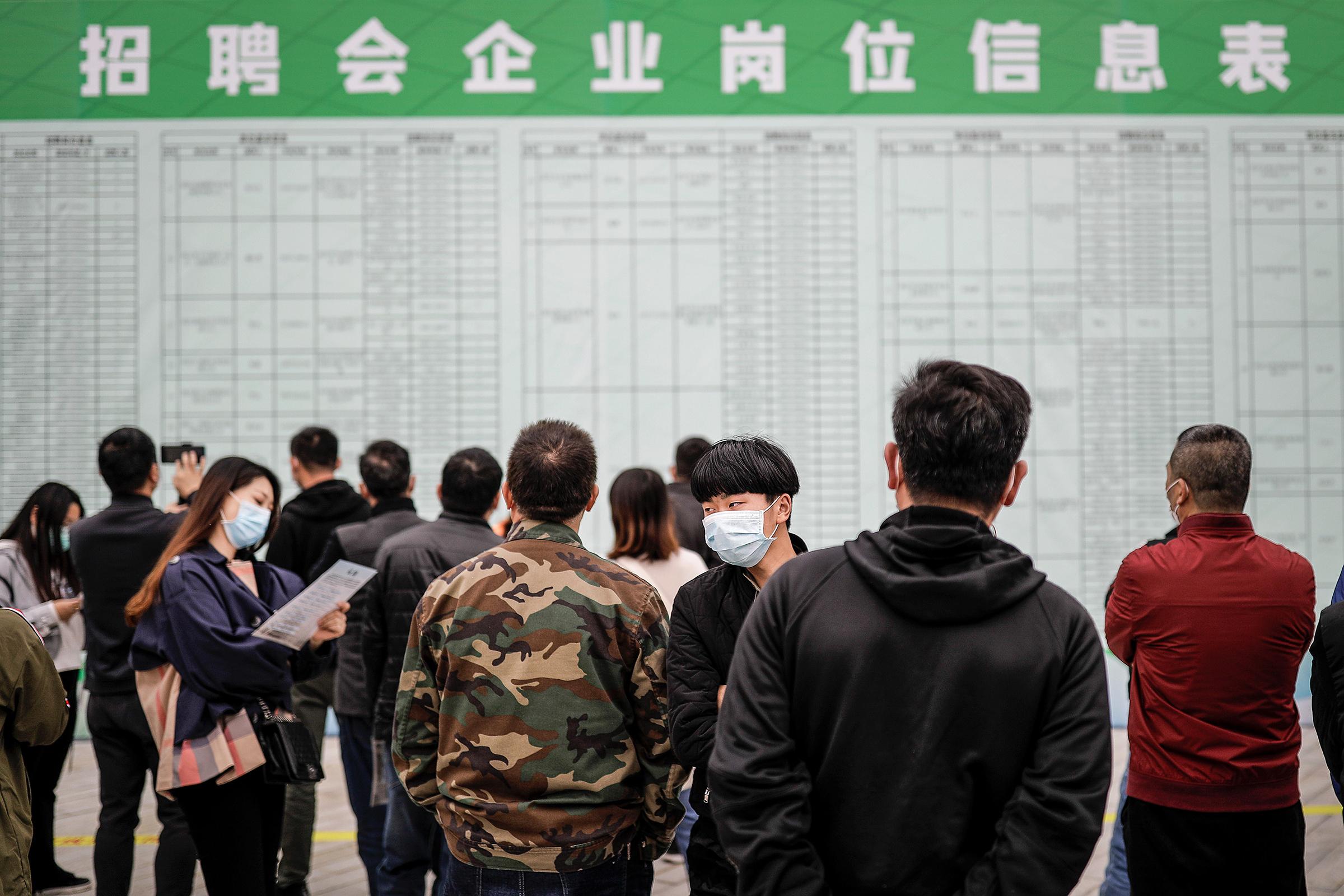
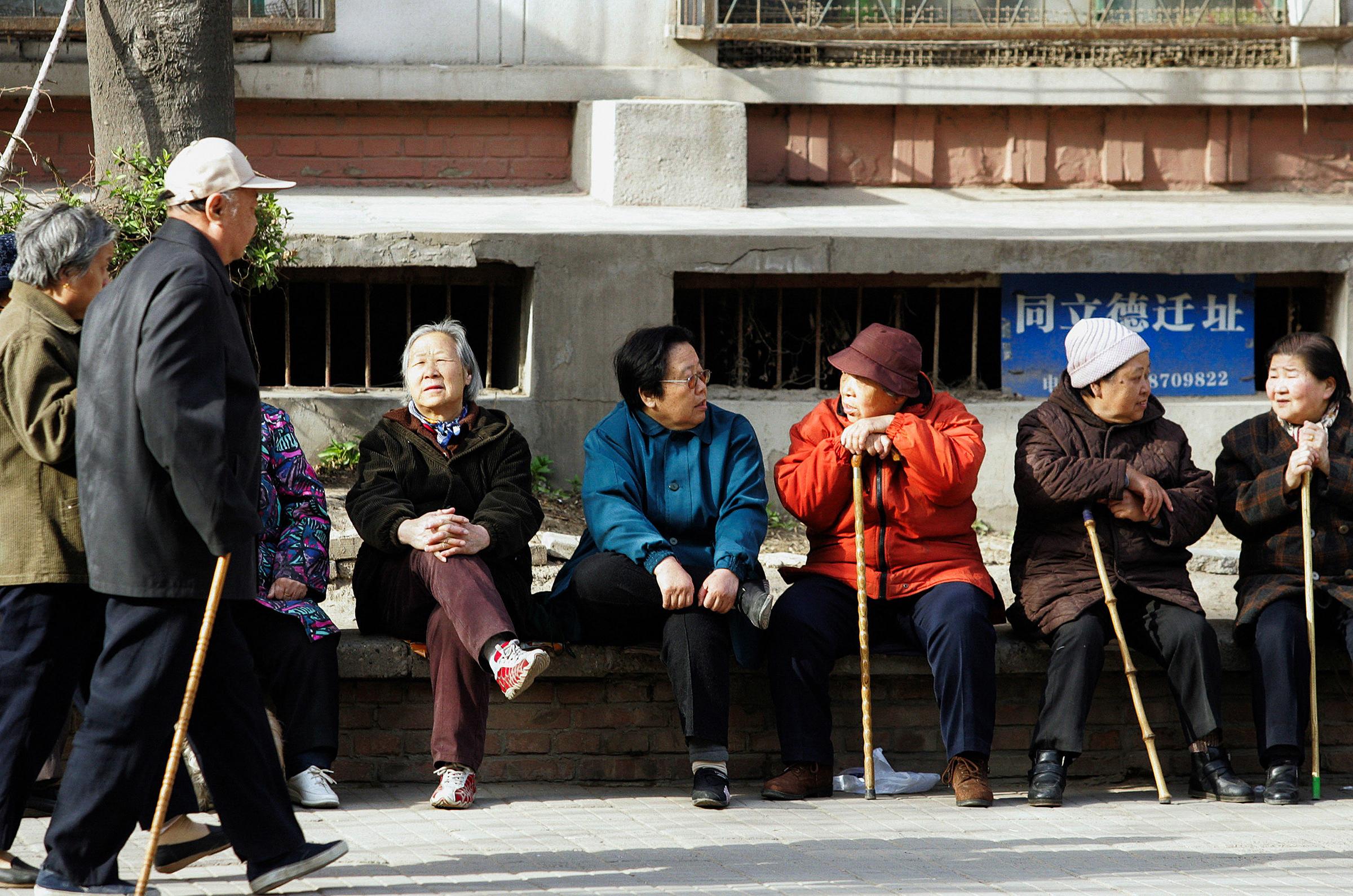
It’s also facing a population decline. China reported its first official population decline in 2022. An aging population combined with falling fertility rates—despite loosening the one-child policy—is an ongoing headwind for population growth. China expert Gordon Chang, author of “The Coming Collapse of China,” believes the country could lose up to two-thirds of its population by the year 2100.
These factors mean that increasing domestic demand has been a dream, not a reality.
The BRI project, whose goal was to invest in neighboring countries and boost both soft power and positive financial returns, has been a spectacular failure. Beset by corruption, zero risk analysis, and mismanagement by cash-poor developing countries, the Chinese banks and investment firms that doled out the BRI loans are struggling with defaults.
According to a recent report by the World Bank and other institutions, China had to recently give out $240 billion in bailouts to banks suffering from these loans. These institutions are partially funded by China, so the real cost of these loans is likely to be much higher.
At the same time, China has been doubling down on an increasingly regressive, state-centric, and authoritarian political and economic system.
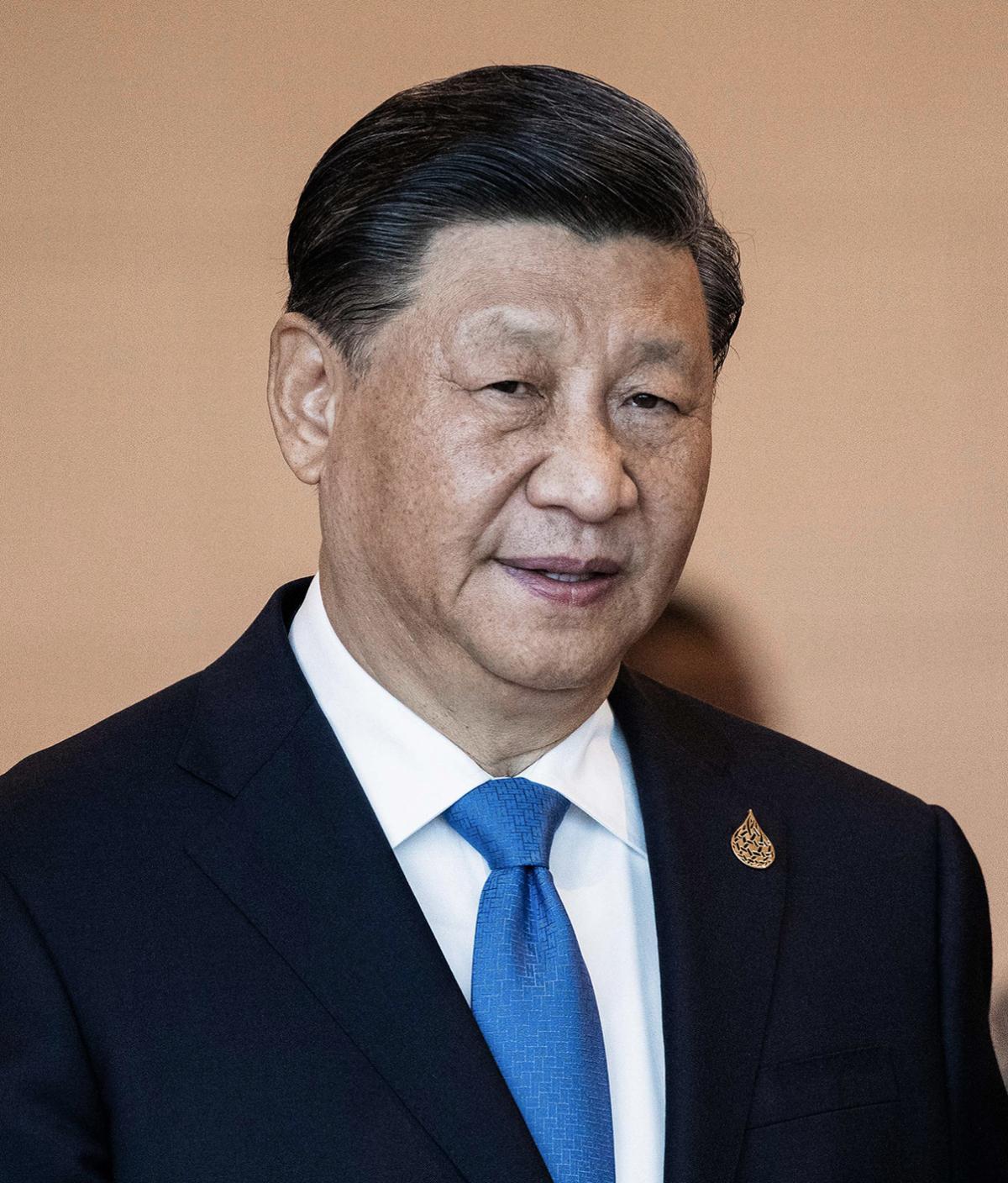
While cut from the same ideological cloth, Mr. Xi exhibits none of former CCP leader Deng Xiaoping’s practical sensibilities. Mr. Xi’s ideological crusade over the past two years, whether intentionally or unintentionally, has also weakened China’s private businesses and domestic innovation. Small business is the backbone of most developed nations’ economies, but Beijing’s stimulus efforts in recent years have focused on zombie state-backed giants while suppressing private businesses.
China’s once-high-flying technology sector has largely been cut down to size at a time when the country may need it the most. The public takedowns of famous entrepreneurs have sent negative signals to the private sector, and now, small businesses lack the confidence—or the capital—to invest and grow. Mr. Xi’s “common prosperity” measures have so far meant “no prosperity” for any.
The timing of all this has been impeccably linked to the regional banking crisis in the United States. The collapse of Silicon Valley Bank in March has cut off a major funding source for Chinese startups. And recent political and economic pushback against U.S. venture capital investing in China has suddenly turned off a major spigot of Chinese funding.
All of this is to say that domestic Chinese growth and consumption are nowhere near the level that can save the country from economic ruin. Many, many cracks are forming and getting bigger. Deflation, falling exports, slower manufacturing activity, declining property prices, and the crashing stock market are all recent symptoms.
In the coming months, we can expect CCP authorities to first turn to the usual playbook of easing financial policies, cutting bank reserve requirements, lowering housing regulations, and increasing borrowing limits. Beijing could even print money and begin direct payments to consumers in a vein similar to what the U.S. government did during the height of the pandemic.
None of this will stem the bleeding. China’s economy has become too large and too concentrated to save by merely changing policies on the margins. Its commercial banks—already mired in nonperforming debts from real estate, infrastructure, the BRI, and lending to unprofitable state-owned enterprises—have no capital to lend. Even creating new bad banks to deal with balance sheet issues requires fresh capital. China in 2023 isn’t the same as China in 1999.
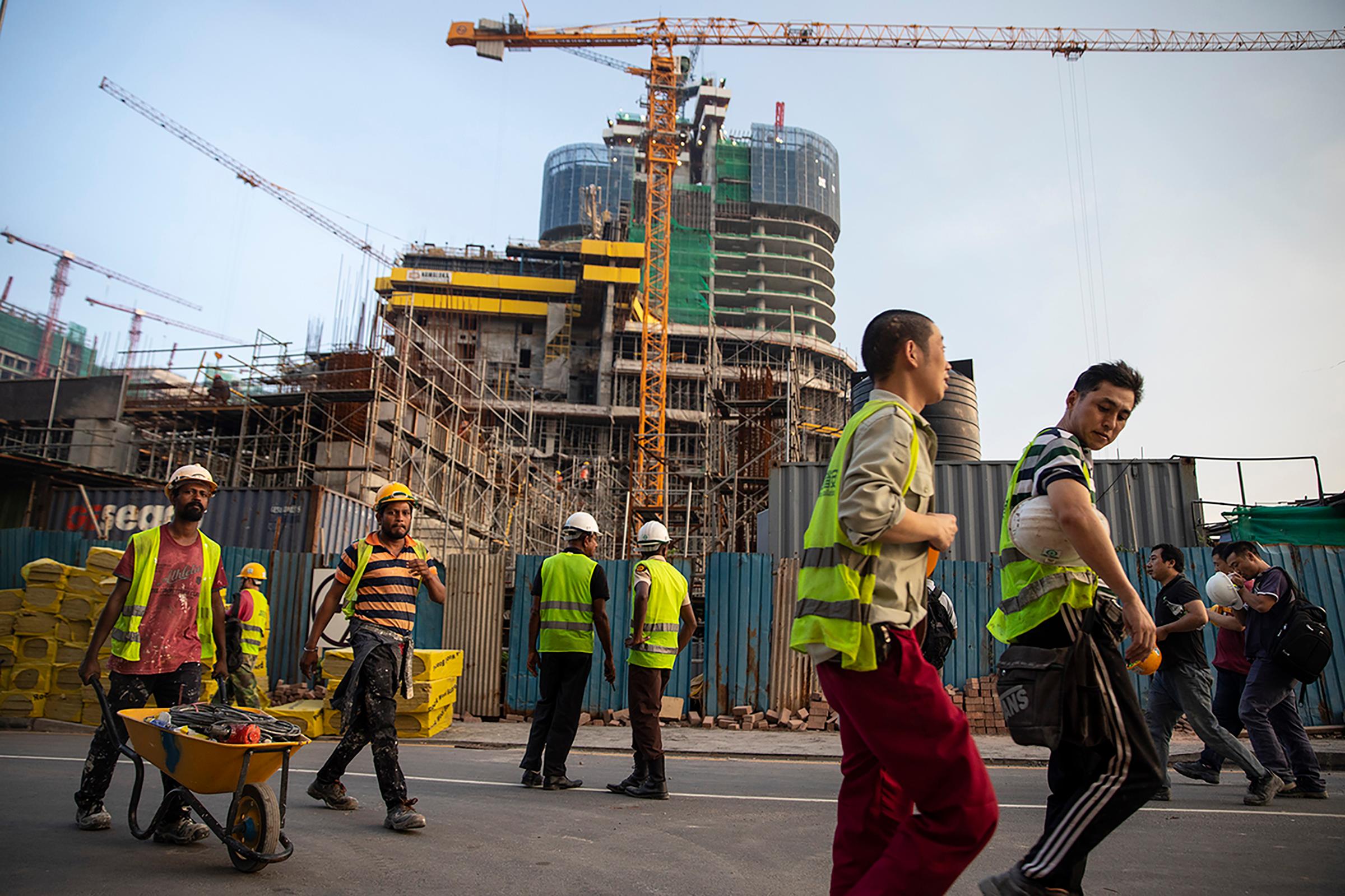
Longer term, those stimulus measures without real economic growth or foreign capital infusion would create severe stagflation—low-to-negative economic growth with high inflation.
This is why authorities continue to hold onto the official line of 5 percent GDP growth for 2023 in hopes of attracting outside capital. Premier Li Qiang has gone on a charm offensive, declaring to the international community that China is “open for business” again. Beijing has also recently met with President Joe Biden’s climate delegation, Treasury Secretary Janet Yellen, and others to drum up investments.
It’s all likely too little, too late.
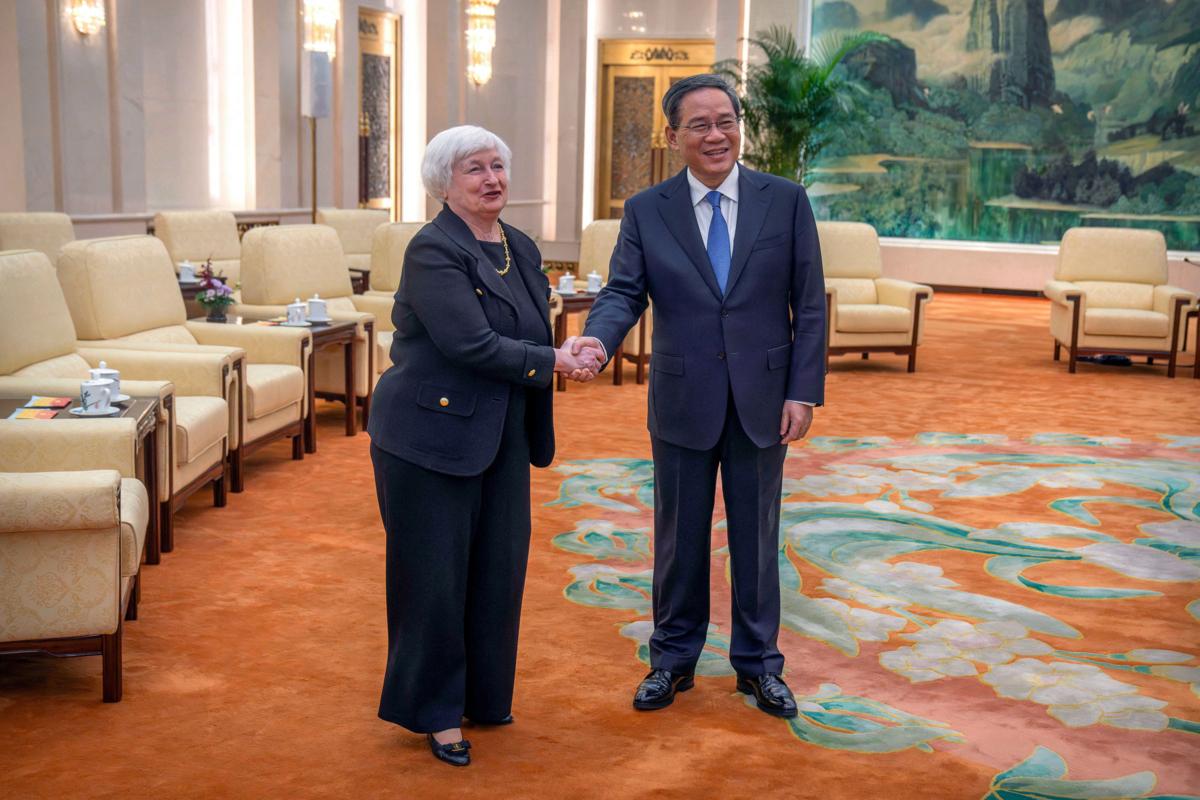
In the near future, the world should be on alert for potential instability and widespread disappointment from the Chinese population, geopolitical problems, and social unrest. This could force the CCP to take drastic measures, including violent suppressions or conflicts with neighbors such as Taiwan to annex capital and business assets.
In reality, it’s hard to forecast how much of a crisis any of this will become. Chinese nationals of a certain vintage will always point back to the “Great Leap Forward” and “Cultural Revolution” to illustrate the degree of suffering the Chinese people could quietly endure under the boot of the CCP.
But that’s ancient history. The regime hasn’t faced a real political crisis since 1989. How much control, power, and influence does the CCP wield over Chinese people today?
What we do know is that the CCP, in its death throes, could be at its most dangerous and unpredictable.
